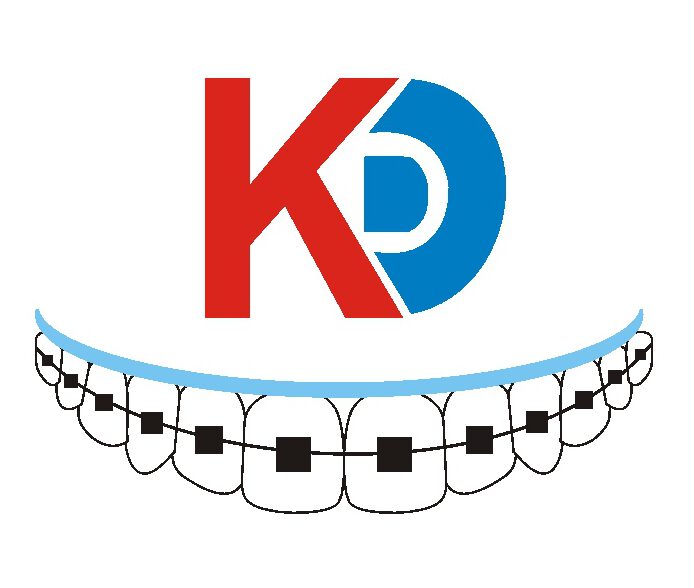Crown, Bridges & Dentures
Crown
A crown, sometimes known as a cap, is used to restore the strength and natural shape of a tooth artificially. They are most often used to restore broken teeth, or teeth that have been weakened by decay or a large filling. Crowns are also used to improve the appearance of teeth with discoloured fillings, protect teeth that had root canal treatment or to hold a bridge or denture in place. Crowns are of complete metal, metal with ceramic, all-ceramic (metal free).
Metal Ceramic usually crowns contain a metal core which is either non-precious metal or precious Gold – Palladium alloy, over which ceramic is added. These crowns exhibit colour nearest to the natural tooth of an individual. However, these type of crowns are used for the front teeth; they give a bluish tinge near the gum line, which is not esthetic. This drawback can be overcome by replacing them with METAL-FREE CERAMIC CROWNS(E-max, Empress) which is devoid of the metal core, thereby improving the appearance of the crown.
Your dentist has to prepare the tooth to fit the crown. This involves removing most of the outer surface of the tooth and then taking a mould of the tooth to be crowned and the tooth opposite. If you have had root canal treatment, you may require a post crown, which involves inserting a post into the tooth, which will help to hold the crown in place.
Bridges
Bridges are used to replace missing teeth. Although partial dentures can be used, if only one or two teeth are missing, and your remaining teeth are strong and have good bone support, your dentist will normally suggest a bridge.
Missing teeth cause gaps. As well as not looking very nice, the teeth either side of the gap will be placed under greater strain, and food and bacteria can get lodged in the gap, creating a risk of decay and gum disease.
Therefore any gaps must be filled as quickly as possible, either using false teeth or a fixed bridge.
A fixed bridge is created by holding a false tooth in place with crowns on the teeth at either side. The crowns will be bonded into place with very strong adhesive, holding the false tooth between them in the gap.
Your teeth will look natural and straight, will be well supported, and the risk of decay and gum disease will be greatly reduced.
Adhesive Bridges
An alternative to a fixed bridge is an adhesive bridge. An adhesive bridge has wings which are attached to the back of the supporting teeth with strong adhesive. Adhesive bridges require much less removal of the neighbouring teeth. Another alternative way to support a bridge is with dental implants.
Replacement of missing teeth can be accomplished by three different modes of treatment
1. Implant Dentistry, 2. Fixed Bridges, 3. Removable partial or complete dentures. The best treatment depends on the number, location and condition of the remaining teeth. All three of these options will restore function and stabilise the bite in an aesthetically pleasing way.
Implant Dentistry: Dental implants serve as the foundation for many types of tooth replacement. Implants can replace one tooth or several missing teeth with crowns or bridges that are fixed in place. For replacement of many teeth or all of the teeth, implants can support very secure removable dentures or fixed bridges if the conditions in the mouth allow it. Implants allow excellent esthetic and functional replacements of missing teeth.
Fixed Bridges: Fixed bridges are natural-looking tooth replacements which help maintain facial structure, reduce stress on the jaw and fill in the gaps caused by missing teeth. These bridges are cemented on the existing teeth and do not come out.
Removable Partial Dentures: Removable partial dentures replace teeth lost due to decay, periodontal disease or injury. They replace the missing teeth, utilising the remaining teeth to support and secure the removable partial denture. Removable partial dentures are a functional, esthetic and cost-effective means of tooth replacement.
Complete Dentures: Complete dentures replace teeth when all upper and/or lower teeth are missing. They restore the function of eating, restore proper facial aesthetics and help people talk properly.
Dentures
Removable complete Dentures: In certain situations, a denture or removable plate is by far the best option in terms of flexibility, ease of construction, cost, and minimising damage to other teeth.
The process of putting in dentures begins with a thorough examination and history of the existing situation. This is then followed by an initial set of impressions, from which we can produce some 3-dimensional models and a provisional design. From here, the second set of models is produced, which can be used to construct the plate or denture.
This is followed by a stage whereby the bite is measured very accurately so that the technician can position the teeth in the best possible place.
Subsequent to this a visit is dedicated to trying in a ‘waxed-up’ version of the denture. This allows the patient to assess the colour, shape, and contour of the teeth, the bite, and whether it is easy to speak normally with the denture in place. Finally, the dentures are fitted and adjusted. Around 7 – 10 days later, a follow-up visit is booked to sort out any problems with the plate and to re-assess the bite and the patient’s tolerance of the denture.
Fixed complete Dentures: Lower dentures, though more difficult, can restore proper function and comfort. Dental implants stabilise the lower denture better.Due to their stable fit, implant-supported tooth replacements provide a much better chewing capacity than common removable replacements and transmit the chewing forces to the jawbone. Contrary to bridges, this almost physiological strain can prevent bone resorption.

